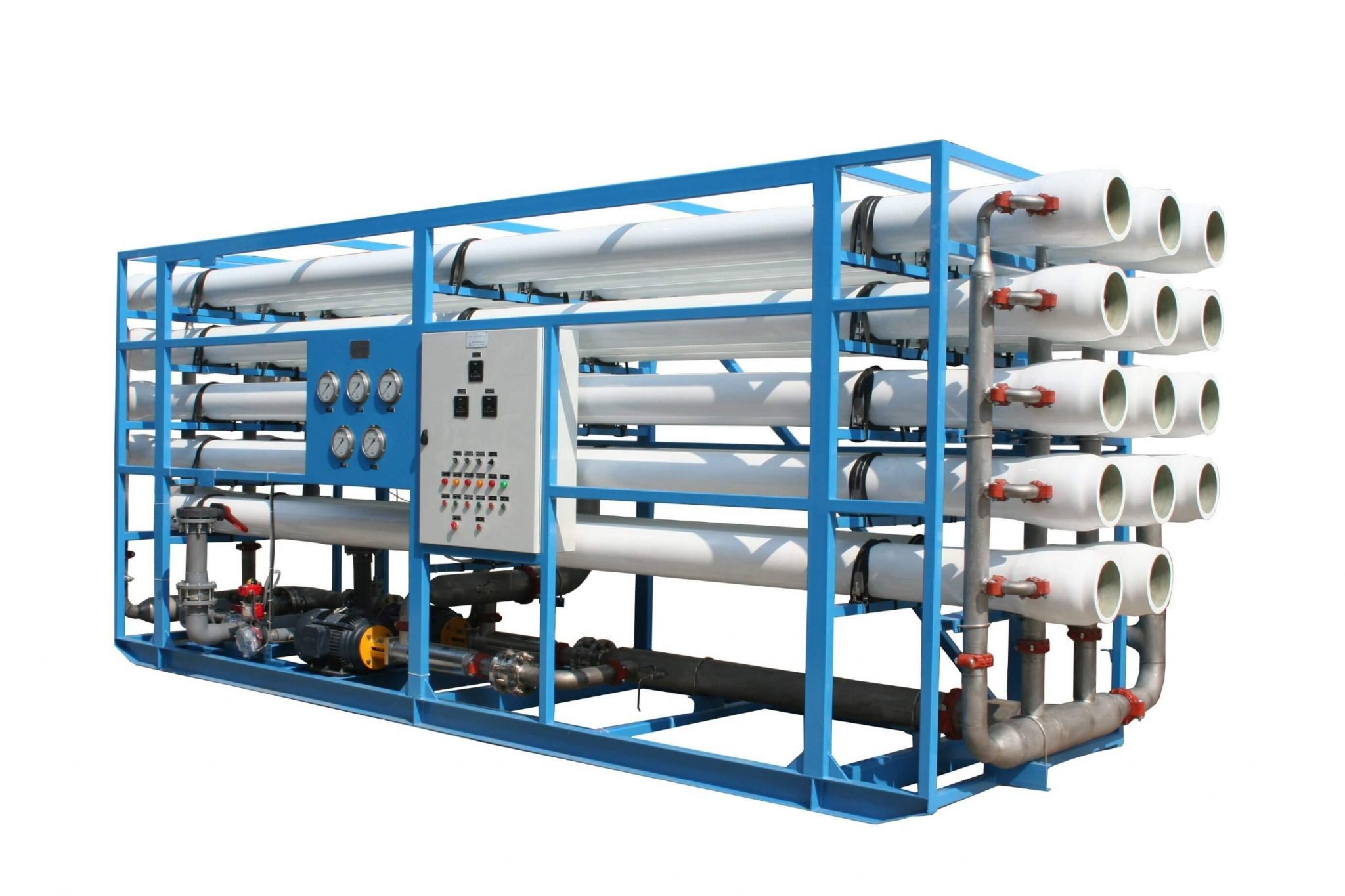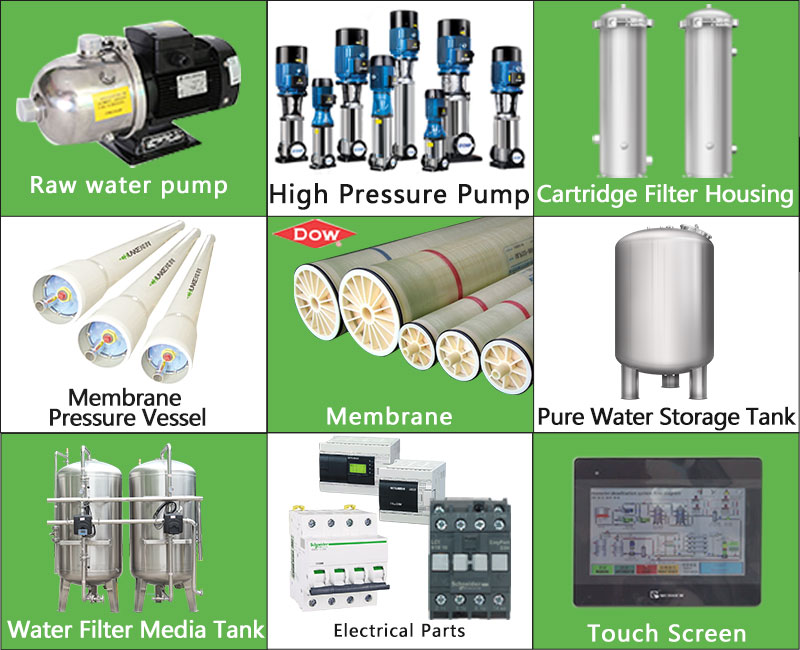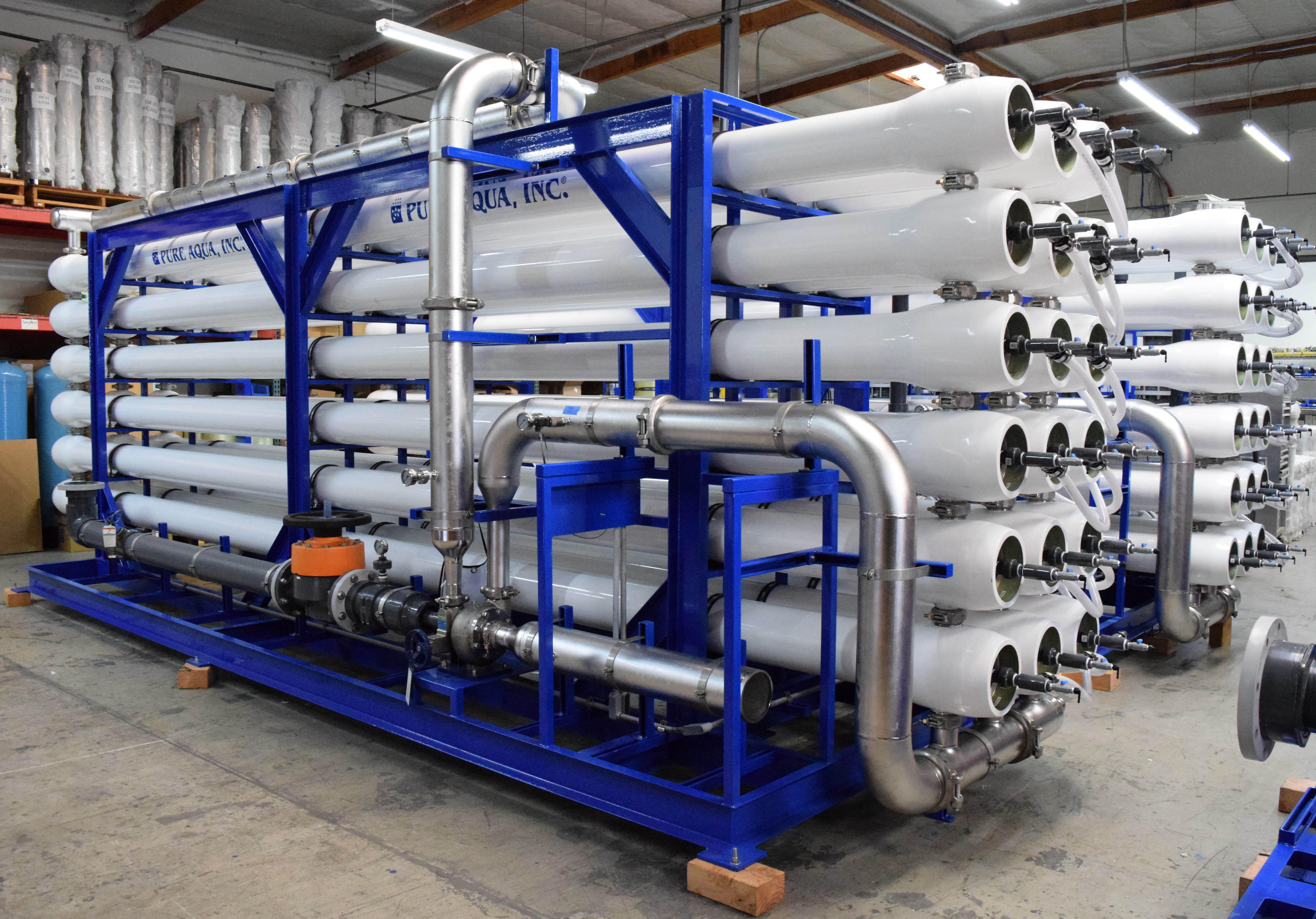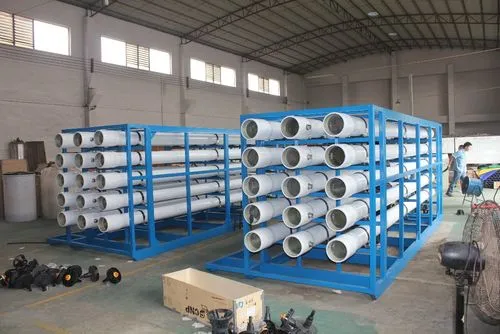What is the principle of reverse osmosis technology in well water desalination plant?
In many areas, groundwater is one of the important water sources for people's daily life and production. However, some groundwater contains high levels of salinity, making it unsuitable for direct use for drinking and agricultural irrigation. In order to solve this problem, the well water desalination plant uses reverse osmosis technology to convert salt water into fresh water to provide usable water resources. This article will deeply explore the reverse osmosis technology principle of well water desalination plant, revealing its working principle and application effect.
1. Salt problem in groundwater
Groundwater is a valuable freshwater resource. However, in some areas, groundwater contains high levels of salt, which is mainly due to factors such as geological structures, soil conditions, and human activities. High-salinity groundwater not only cannot be used directly for drinking and irrigation, but also affects soil quality and crop growth, causing inconvenience and losses to local residents and agricultural production.

2. Principle of reverse osmosis technology
Reverse osmosis technology is a physical process that separates water molecules from a solution through a semipermeable membrane. In well water desalination plants, reverse osmosis technology usually includes the following steps:
Pretreatment: Groundwater first undergoes a pretreatment process, including filtration, iron removal, manganese removal and other steps to remove suspended particles, organic matter and impurities in the water to protect the normal operation of the subsequent reverse osmosis membrane.
High-pressure pumping: The pretreated groundwater is pumped into the reverse osmosis device, and a certain water pressure is generated through the high-pressure pump to force water molecules through the semi-permeable membrane.
Semipermeable membrane separation: After the groundwater enters the reverse osmosis device, it passes through the semipermeable membrane, the key component of which is the reverse osmosis membrane. The reverse osmosis membrane has a microporous structure that allows water molecules to pass through while intercepting salt molecules and impurities. Water molecules are forced through the membrane, while salt molecules and impurities are blocked on one side of the membrane, creating fresh water.
Produces fresh water: Through the process of passing through the reverse osmosis membrane, the liquid produced is fresh water with lower salt content. In this way, the salts in the groundwater are separated, creating fresh water that can be used for purposes such as drinking and irrigation.

3. Application effect of reverse osmosis technology
The well water desalination plant uses reverse osmosis technology to treat groundwater and has achieved good application results:
Efficient desalination: Reverse osmosis technology can effectively remove salt and impurities in groundwater, producing high-quality fresh water to meet the needs of drinking water and agricultural irrigation.
Energy saving and environmental protection: Compared with the traditional distillation method, reverse osmosis technology has the advantages of low energy consumption and easy operation, saving energy and reducing environmental pollution.
Stable operation: Reverse osmosis technology uses advanced membrane separation technology, which has stable operating characteristics and is not greatly affected by changes in water quality and external conditions, ensuring long-term stable operation of the equipment.

4. Development trends and challenges
With the continuous advancement of science and technology and the accumulation of application experience, well water desalination plant reverse osmosis technology continues to develop in application, but it still faces some challenges:
Membrane life and maintenance: The life of the reverse osmosis membrane is affected by factors such as water quality, operating conditions, and maintenance management. It requires regular replacement and maintenance, which increases operating costs and technical difficulty.
High-concentration brine treatment: The concentrated water produced during the reverse osmosis process contains high-concentration salts and impurities, which requires further treatment and disposal, increasing environmental pollution and resource consumption.
Application of new technologies: With the continuous development and application of new membrane materials and membrane modules, well water desalination plant reverse osmosis technology will become more intelligent and efficient, improving treatment efficiency and water quality stability.

In summary, the reverse osmosis technology used in the well water desalination plant is a physical process that separates salts and impurities in groundwater through a semipermeable membrane. It has the advantages of efficient desalination, energy saving, environmental protection, and stable operation. With the continuous development of technology and the accumulation of application experience, it is believed that well water desalination plant reverse osmosis technology will play a more important role in solving the problem of groundwater salinization and ensuring water resource security.




